Painting a laminate bathroom vanity is a cost-effective way to give your bathroom a fresh new look without breaking the bank. Laminate vanities are a popular choice for bathrooms due to their durability and affordability, but they can also be quite plain and boring. With a little bit of paint and some DIY skills, you can transform your laminate vanity into a stunning focal point in your bathroom. Here's a step-by-step guide on how to paint a laminate bathroom vanity.How to Paint a Laminate Bathroom Vanity
Choosing the right paint for your laminate bathroom vanity is crucial for achieving a professional and long-lasting finish. The best type of paint to use on laminate is a high-quality, 100% acrylic latex paint. This type of paint is water-based, dries quickly, and has great adhesion properties, making it ideal for painting laminate surfaces. It also has low levels of volatile organic compounds (VOCs), which makes it safe for indoor use and better for the environment.Best Paint for Laminate Bathroom Vanity
Step 1: Prep the Surface - Before you start painting, make sure to clean and sand the surface of your vanity. Use a mild detergent and water to remove any dirt, grime, or grease. Then, lightly sand the surface with fine-grit sandpaper to create a smooth and rough surface for the paint to adhere to. Step 2: Prime the Surface - To ensure that the paint will adhere properly and prevent any bleeding or yellowing, it's essential to prime the surface with a good quality bonding primer. Apply the primer evenly with a paintbrush or roller and let it dry completely according to the manufacturer's instructions. Step 3: Paint the Vanity - Once the primer is dry, it's time to paint your vanity. Use a high-quality paintbrush or roller to apply two coats of paint, allowing the first coat to dry completely before applying the second one. Make sure to paint in the direction of the wood grain for a smooth and professional finish. Step 4: Add a Protective Coat - For added durability and protection, consider adding a clear coat of polyurethane to your painted vanity. This will also give your vanity a glossy finish and make it easier to clean and maintain. Step 5: Reattach Hardware - After the paint and clear coat have dried completely, reattach the hardware and reinstall the vanity in your bathroom.Step-by-Step Guide for Painting a Laminate Bathroom Vanity
If you're planning to paint your laminate bathroom vanity yourself, here are some tips to help you achieve the best results: - Choose a well-ventilated area to paint and wear a mask to protect yourself from any fumes. - Use a small paintbrush to paint the edges and corners of your vanity, and a roller for larger surfaces for a more even finish. - Sand the surface lightly between coats for a smoother finish. - Consider using a paint sprayer for a more professional and flawless finish.DIY Painting Tips for Laminate Bathroom Vanity
A painted laminate bathroom vanity can instantly transform the look and feel of your bathroom. You can choose to go for a bold and dramatic color to make a statement or opt for a more subtle and neutral shade to create a calming and spa-like atmosphere. Either way, a painted laminate vanity will add character and charm to your bathroom and make it feel like a whole new space.Transform Your Bathroom with a Painted Laminate Vanity
When it comes to choosing the right color for your painted laminate bathroom vanity, there are a few things to keep in mind: - Consider the overall color scheme of your bathroom and choose a color that complements it. - Take into account the size and lighting of your bathroom. Darker colors can make a small bathroom feel even smaller, while lighter colors can make it appear more spacious. - Think about the style and mood you want to create in your bathroom. Bold and bright colors can make a statement, while softer and muted tones can create a more calming and relaxing atmosphere.Choosing the Right Color for Your Painted Laminate Bathroom Vanity
Painting a laminate bathroom vanity may seem like an easy task, but there are some common mistakes that you should avoid to achieve a professional finish: - Not properly prepping the surface before painting. This can result in paint peeling or not adhering properly. - Using the wrong type of paint. Using oil-based paint or regular latex paint can result in peeling and cracking on laminate surfaces. - Rushing the painting process. It's essential to take your time and apply thin coats of paint to achieve a smooth and even finish.Common Mistakes to Avoid When Painting a Laminate Bathroom Vanity
Prepping and priming your laminate bathroom vanity is crucial for a successful paint job. Here's how to do it: - Clean the surface thoroughly with a mild detergent and water. - Sand the surface lightly with fine-grit sandpaper. - Wipe away any dust or debris with a damp cloth and let it dry completely. - Apply a bonding primer evenly with a paintbrush or roller and let it dry according to the manufacturer's instructions.How to Prep and Prime a Laminate Bathroom Vanity for Painting
When it comes to choosing the best paint for your laminate bathroom vanity, here are some top brands to consider: - Behr Premium Plus Ultra - Sherwin-Williams Emerald - Benjamin Moore Aura - Valspar Reserve - Glidden PremiumTop Brands of Paint for Laminate Bathroom Vanities
If you're still not convinced that painting a laminate bathroom vanity can make a significant difference in your bathroom, here are some stunning before and after makeovers to inspire you: - A plain white laminate vanity transformed into a bold and beautiful navy blue centerpiece. - A dated oak laminate vanity turned into a sleek and modern black vanity with gold hardware. - A boring beige laminate vanity given new life with a fresh coat of light grey paint and new hardware. - A simple white laminate vanity jazzed up with a coat of mint green paint and decorative stenciling. Now that you have all the information, tips, and inspiration you need, it's time to grab your paintbrush and give your laminate bathroom vanity a much-needed makeover. With a little bit of effort and creativity, you can completely transform your bathroom and make it a space you'll love for years to come.Before and After: Stunning Makeovers of Painted Laminate Bathroom Vanities
Why Choose to Paint Your Laminate Bathroom Vanity?

Enhance Your Bathroom's Aesthetics

When it comes to house design, the bathroom is often overlooked. However, it is an important space that deserves attention and a fresh new look. A laminate bathroom vanity can easily become an eyesore with its outdated and worn-out appearance. Painting it can give your bathroom an instant upgrade and elevate its overall aesthetics.
Cost-Effective Solution

Replacing a bathroom vanity can be a costly and time-consuming project. Not to mention, it also involves a lot of demolition and construction work. On the other hand, painting your laminate bathroom vanity is a more affordable and efficient solution. With just a few supplies and some paint, you can transform your vanity into a brand new piece without breaking the bank.
Limitless Design Possibilities
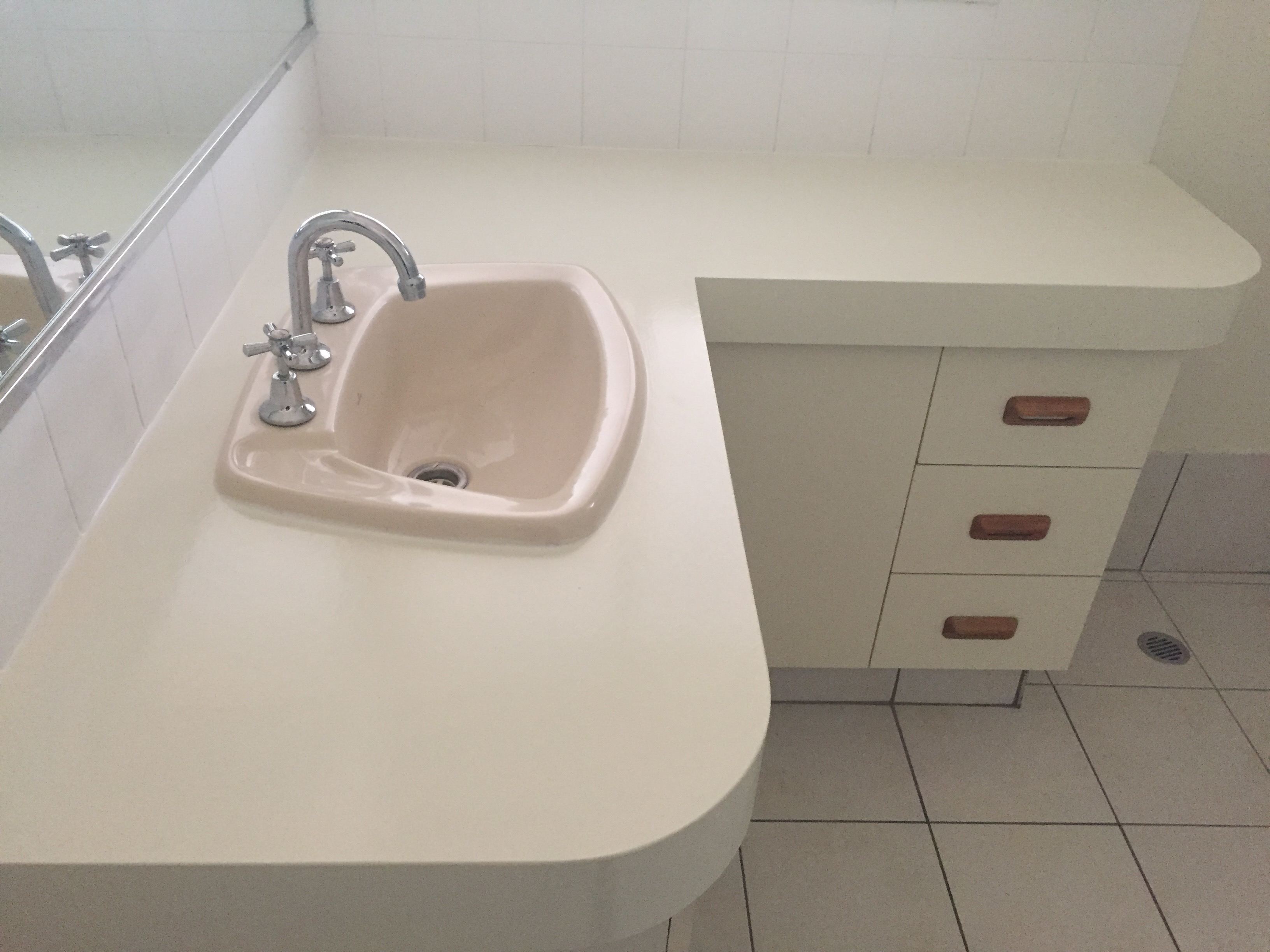
Painting allows you to explore your creativity and personalize your bathroom vanity according to your style and taste. You can choose from a wide range of colors, finishes, and techniques to achieve the perfect look for your bathroom. From a sleek and modern glossy finish to a rustic and distressed look , the possibilities are endless.
Extend the Lifespan of Your Vanity
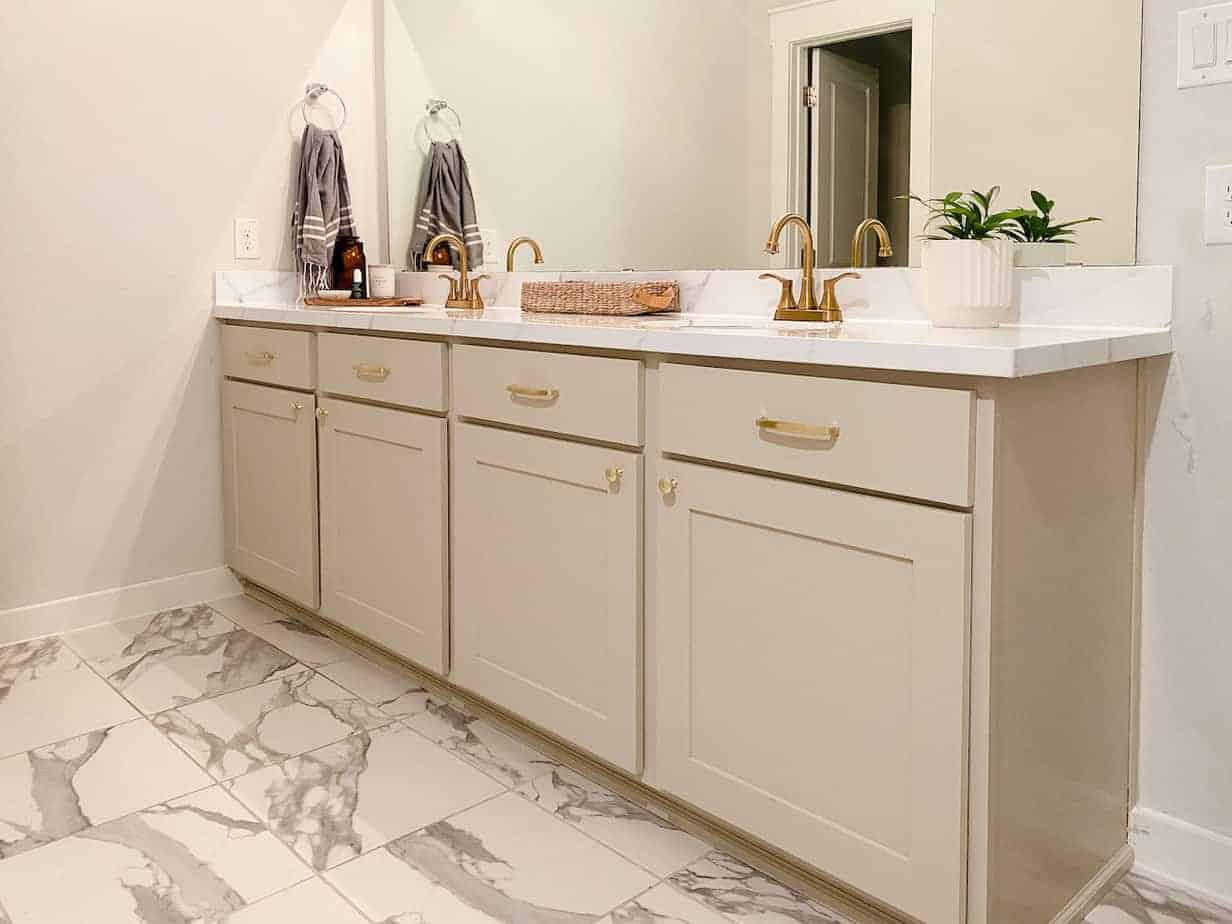
Over time, a laminate bathroom vanity can become damaged and discolored due to moisture and daily use. By painting it, you can protect the surface and extend its lifespan. Not only will it look brand new, but it will also be more durable and resistant to wear and tear.
In conclusion, painting your laminate bathroom vanity is a practical and effective way to refresh your bathroom's design. It is a cost-effective solution, offers limitless design possibilities, and extends the lifespan of your vanity. So, if you're looking to give your bathroom a makeover, consider picking up a paintbrush and transforming your vanity into a stunning focal point.










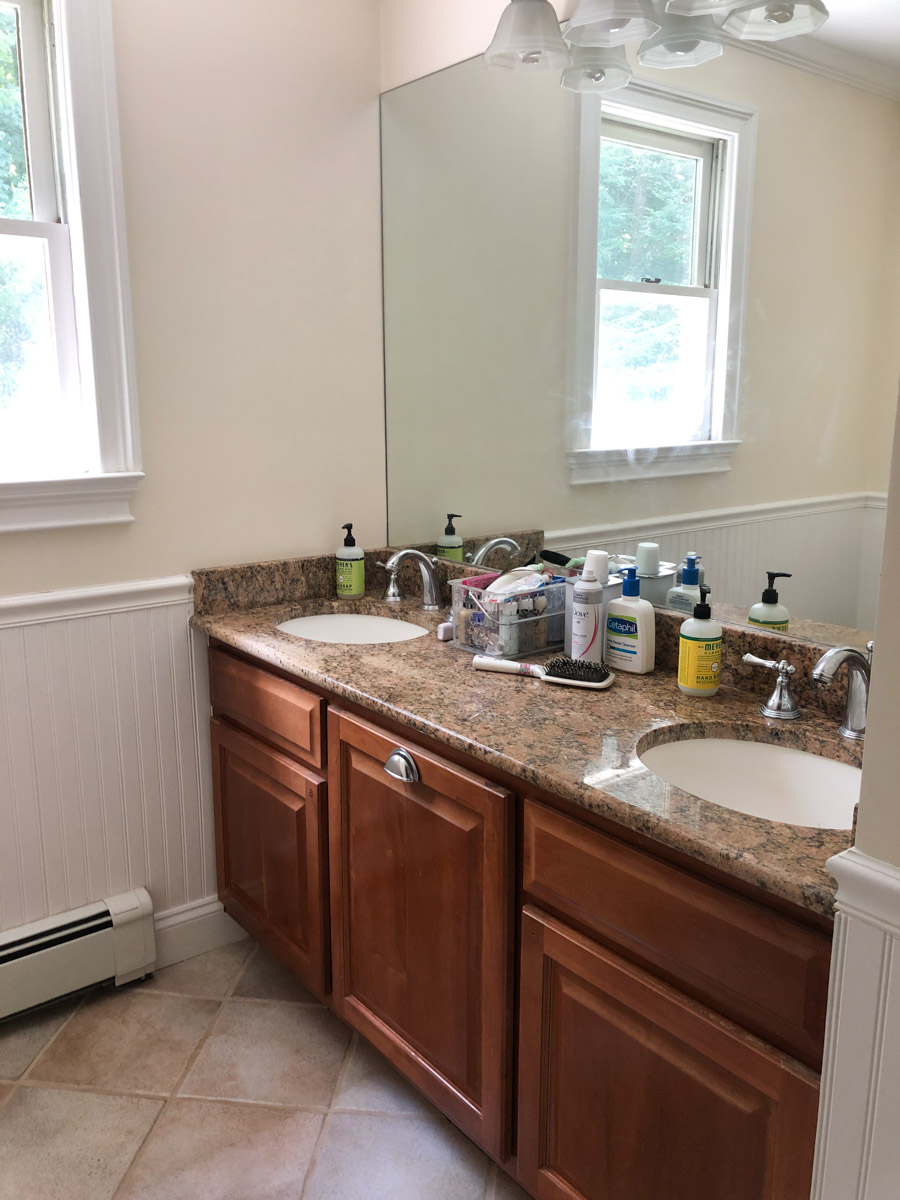








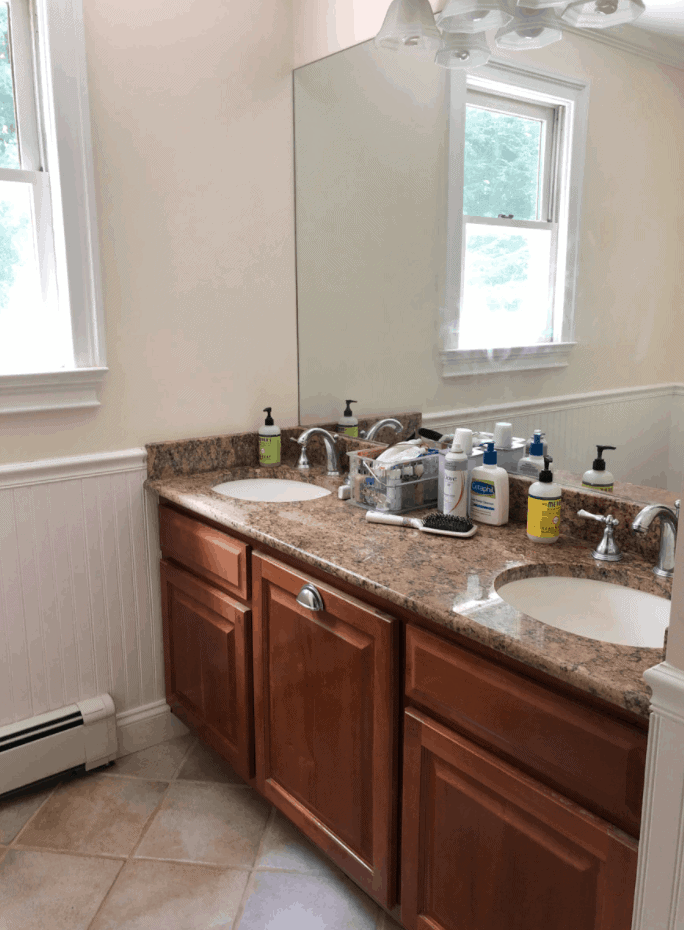






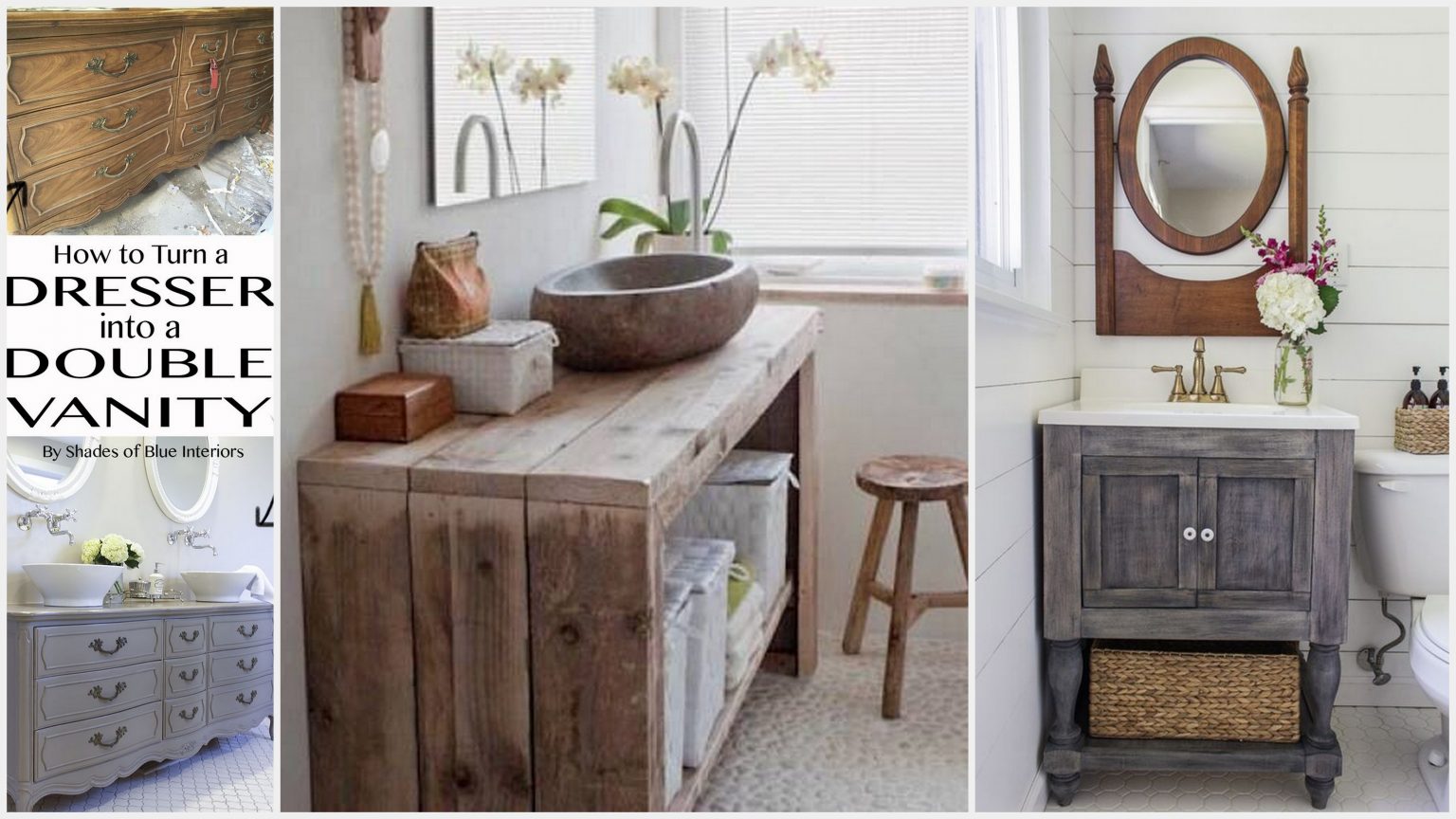
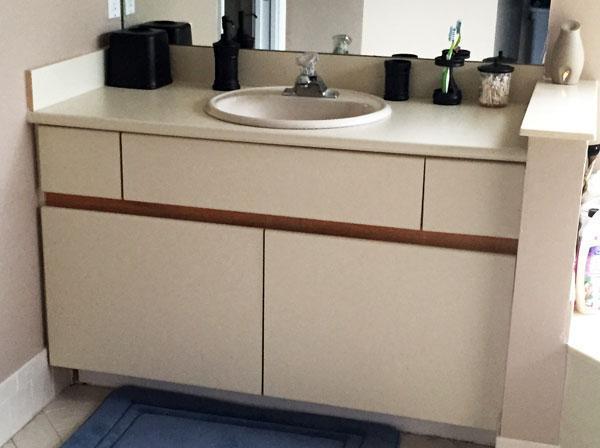













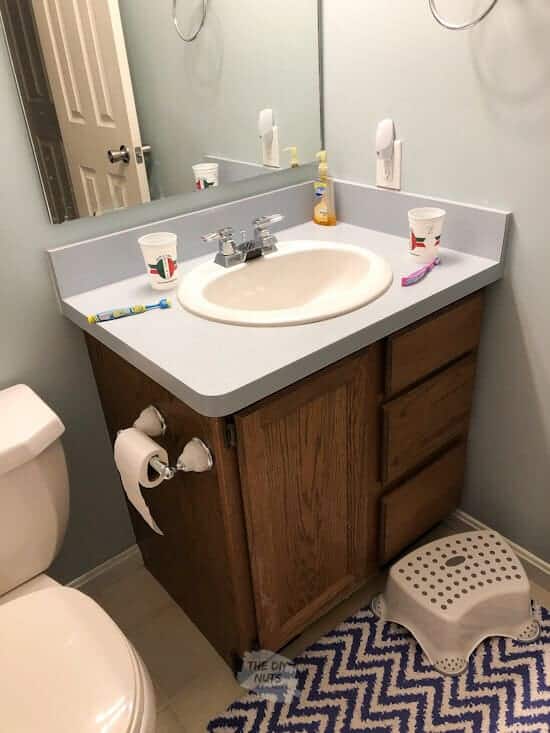

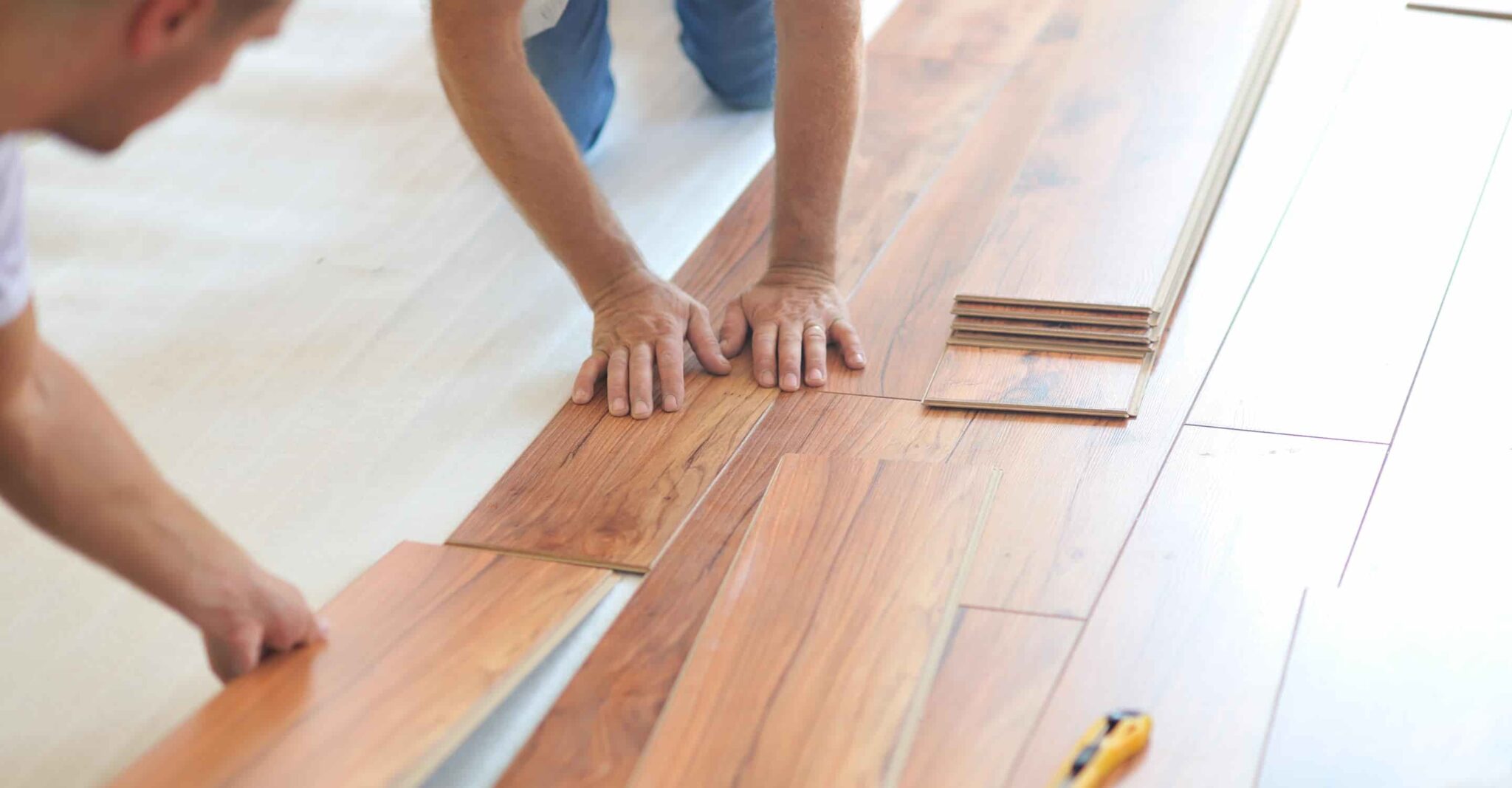


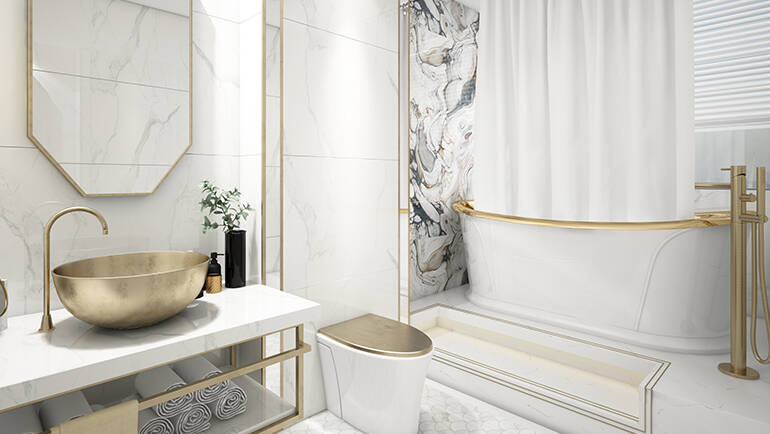








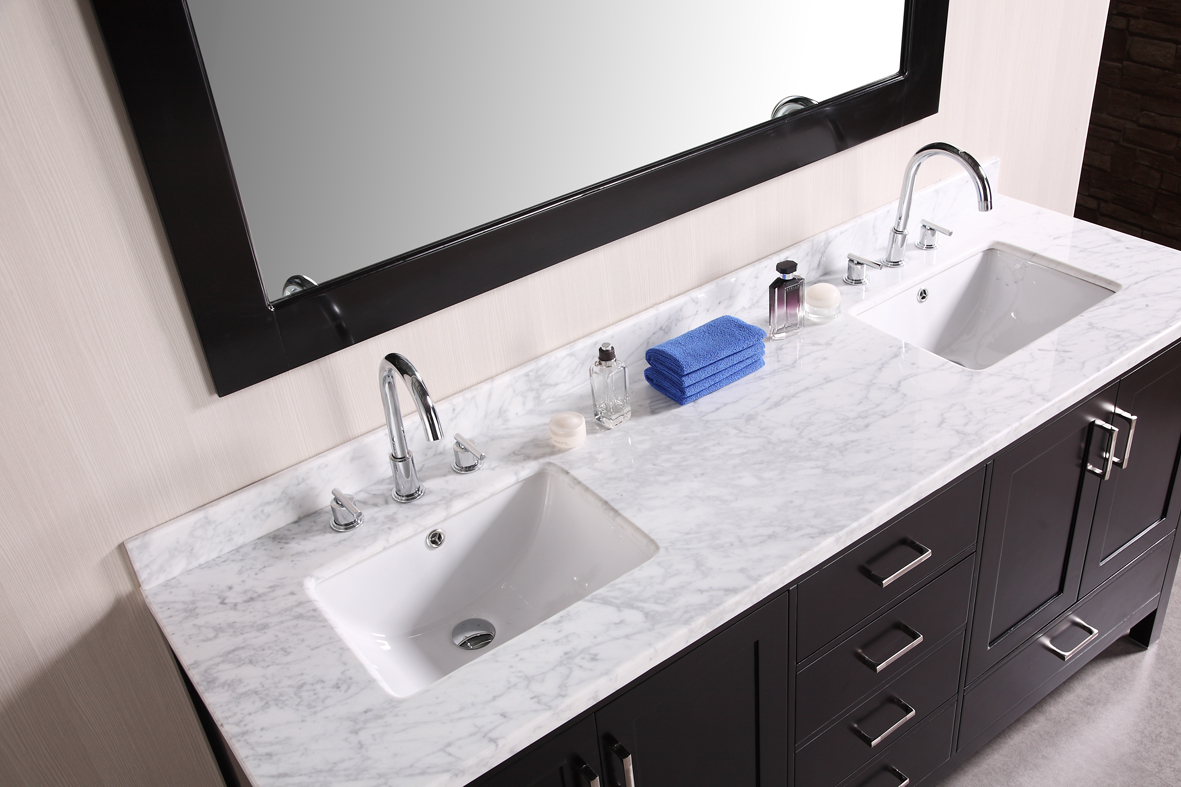




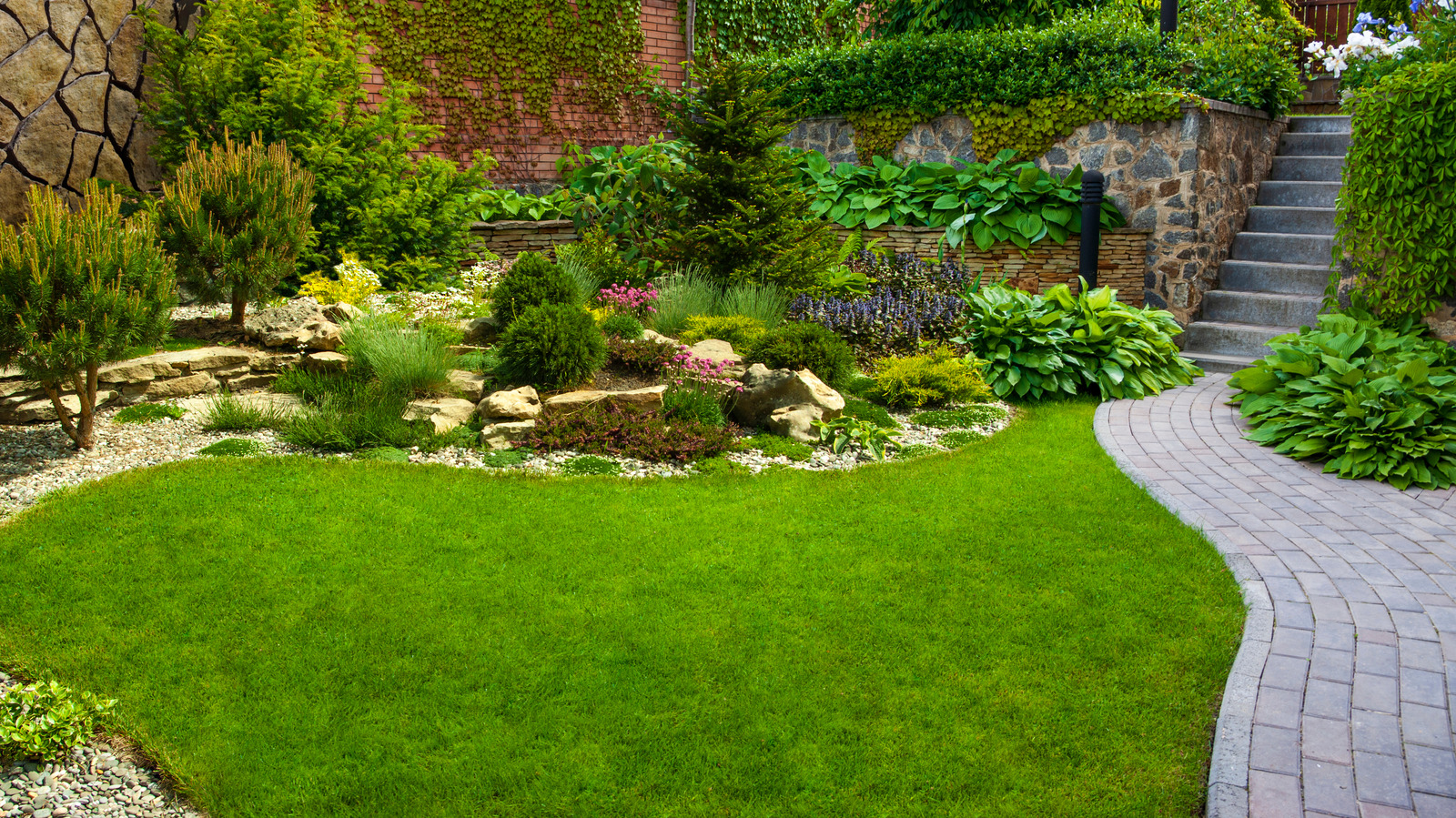







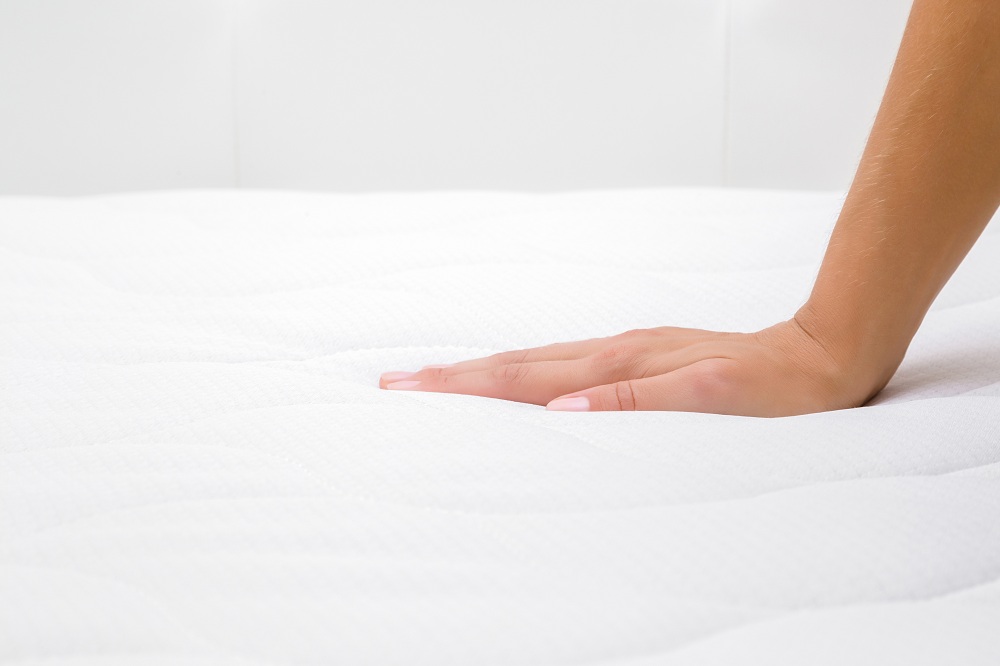

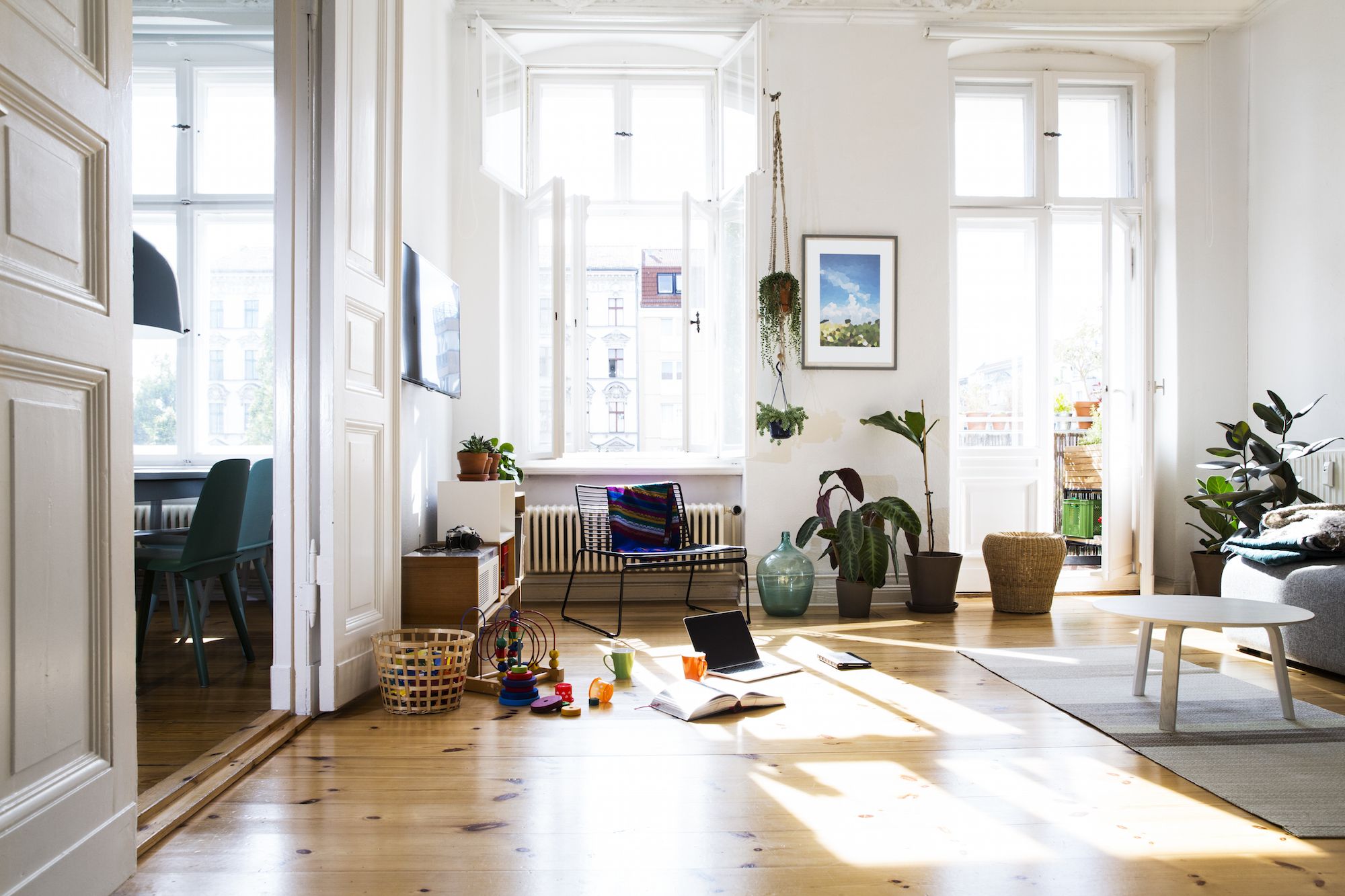
/farmhouse-style-kitchen-island-7d12569a-85b15b41747441bb8ac9429cbac8bb6b.jpg)
